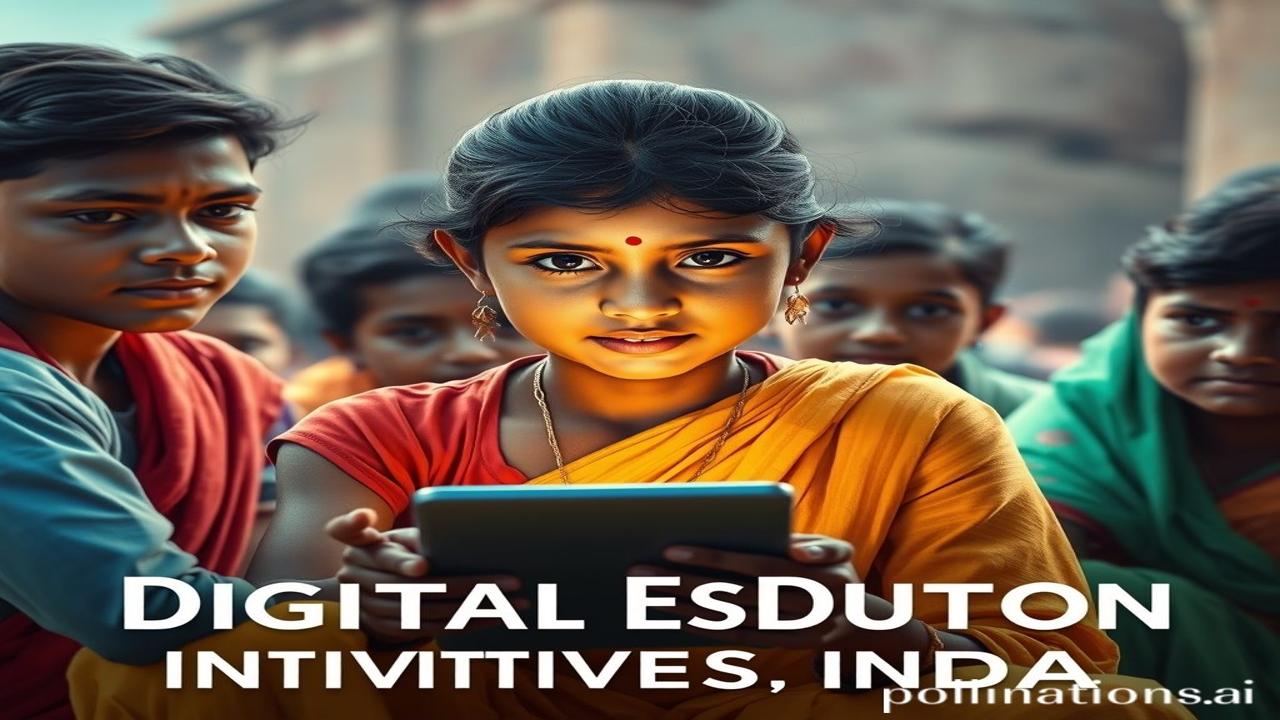Gaon Ki Pathshala: Digital Shiksha, Nayi Subah (Digital Education in Rural India)
Imagine, ek nanha sa ladka, chote chote kadam se, school ki taraf ja raha hai. Dhool bhari sadak, dhoop tez, aur haath mein slate-pencils. Ye scene shayad aapke bachpan ki yaadon mein bhi hoga. Lekin aaj, 2024 mein, ye tasveer dheere dheere badal rahi hai. Wohi ladka, ab tablet pakde, online class attend kar raha hai. Yahi hai digital shiksha ka kamaal, jo gaon-gaon tak pahunch raha hai.
इतिहासिक पृष्ठभूमि / Historical & Cultural Context
Digital education in rural India is not just a modern trend; it’s a necessity. Humare desh ki aabadi ka bada hissa gaon mein rehta hai, aur un tak quality education pahunchana hamesha se ek challenge raha hai. Traditionally, schools mein teachers ki kami, infrastructure ki kami, aur resources ki kami, ye sabhi issues bane rahe.
But the journey towards bridging this gap started much earlier. Remember the Sarva Shiksha Abhiyan (SSA) in 2001? It was a major step towards universalizing elementary education. Then came the National Programme on Technology Enhanced Learning (NPTEL) in 2003, which aimed to improve the quality of engineering and science education.
However, the real revolution came with the advent of affordable internet and smartphones. Initiatives like the National Digital Literacy Mission (NDLM) and the Digital India campaign gave a big push to digital literacy, paving the way for digital education in remote areas. The COVID-19 pandemic further accelerated this process, forcing schools to adopt online learning methods.
So, digital education isn’t just about replacing textbooks with tablets. It’s about making learning accessible, engaging, and relevant for every child, regardless of where they live.
ज़मीनी सच – लोग और जीवन / Deep Dive with Human Element
Picture this: Sunita, a farmer’s daughter from a small village in Rajasthan. Her school is miles away, and her parents can’t always afford to send her. But now, thanks to a government initiative, her school has a computer lab with internet access.
Sunita, along with her friends, eagerly awaits their online classes. They learn about science through interactive videos, explore historical monuments through virtual tours, and even connect with students from other parts of the country through video conferencing.
“Pehle toh kitabon se padhna mushkil lagta tha,” Sunita tells her mother, “Lekin ab, videos dekh kar sab samajh aa jata hai. Aur hum toh online quiz bhi khelte hain!”
Her mother smiles, “Padhoge likhoge toh banoge nawab, Sunita! Dekhna, ek din tum bhi humare gaon ka naam roshan karogi.”
This scenario is becoming increasingly common in rural India. Digital education is not just changing the way children learn; it’s transforming their lives and their communities.
धरोहर और पहचान / Cultural Significance Today
Digital education in rural India is more than just a technological advancement; it’s a reflection of our commitment to sarva shiksha – education for all. It connects with our ancient values of gyan and vidya, ensuring that knowledge is accessible to everyone, regardless of their location or socio-economic background.
Today, we see its presence in the integration of local languages in online learning platforms, the use of traditional art forms in digital content, and the focus on skill-based training that caters to the specific needs of rural communities. This helps in preserving our dharohar while preparing the next generation for a digital future.
Digital education is becoming an integral part of Bharatiyata by empowering individuals to contribute to the nation’s growth while staying rooted in their cultural heritage.
मजेदार तथ्य या भ्रम-भंजक / Fun Fact or Myth-Buster
Myth: Digital education will replace teachers.
Reality: Digital education is a tool to assist teachers, not replace them. It provides them with resources to make their teaching more effective and engaging. It also allows students to access learning materials outside of the classroom, fostering a more independent and collaborative learning environment.
Fun Fact: Did you know that some initiatives are using satellite technology to deliver educational content to remote areas where internet connectivity is limited? It’s like bringing the classroom to the students through the skies!
दृश्य और भावनाएं / Visual & Sensory Layer
Imagine the air in a small village school during an online class. The smell of freshly baked roti wafts in from nearby homes. The sound of children giggling as they learn about the solar system through an interactive game. The feeling of excitement as they connect with students from a different state. The vibrant colors of the digital content on their tablets, bringing the world to their fingertips.
अंतिम विचार या उद्धरण / Closing Insight or Quote
“ज्ञानं परमं ध्येयम्” – Knowledge is the highest goal.
Digital education is not just about providing access to technology; it’s about empowering individuals with the shakti of knowledge, so they can build a better future for themselves, their communities, and our nation. Let us continue to embrace this transformative force and ensure that every child in rural India has the opportunity to reach their full potential.
